
3 Ways To Use Self Heal In Your Materia Medica
Although self heal (Prunella vulgaris) is an herb that commonly grows across the world and has been used traditionally for ages, its wellness-supporting virtues are often forgotten about in many modern herbal practices! Roughly 400 years ago, self heal was considered one of the top herbs in its class and was highly sought after by herbalists far and wide (Holmes, 1989). There are many ways to use self heal, and since it is a relatively easy herb to grow worldwide, it makes a convenient and multi-purpose herb to have in your herbal toolbox.
In this article, I would like to share three ways to use self heal in your materia medica that are accessible to integrate for both new and seasoned herbalists.
3 Ways to Use Self Heal in Your Materia Medica
While there are many ways you can use self heal in your materia medica, the three methods below are applications I frequently utilize this herb for time and time again. These three ways to use this traditional herb showcase some of the core reasons why self heal stands out as a useful herb.
1. To Help Promote Skin & Tissue Repair
One of the most common ways to use self heal is to help promote skin and tissue health. Hence the name “self heal,” this herb can be used both internally and externally to help the skin and tissues improve on their own. Self heal is an astringent herb, making it useful to apply topically for localized swelling through tonifying and tightening the tissues it touches (Holmes, 1989).
Considered a premier vulnerary herb, or an herb which promotes wound, skin, and tissue health, you can use self heal internally for gastrointestinal issues where the lining of the gut is damaged or inflamed. You can also use it externally as a wash or compress to promote healthy skin for minor cuts or abrasions (Holmes, 1989). When using self heal for external skin issues, both internal and external applications can be used for even more comprehensive support. For topical applications, it can be infused into a carrier oil then prepared into a salve or ointment and applied on minor cuts and abrasions (after they have been properly cleaned), bruises, external hemorrhoids, and herpes outbreaks.
2. For Cleaning Minor Wounds
Self heal makes an excellent addition to one’s herbal first aid kit. Not only can it help promote healthy skin and tissue, it also carries a broad-spectrum antibacterial effect that makes it a wonderful herb to use throughout the wound-healing process (Holmes, 1989). Herbalist Matthew Wood (2008) notes that many of the old herbal authors from ages past considered self heal to be one of the most reliable herbs for wounds, often referred to as “woundworts,” available.
One of the reasons why self heal is such a valuable herb for wounds is due to the fact that it can help stimulate the action of phagocytes, or the cells which can engulf and absorb bacteria in the body (Holmes, 1989) when used internally. This herb can also help staunch the flow of blood when applied topically, making it a useful first aid tool when bleeding is present (Holmes, 1989). The aerial parts of self heal can be prepared in a long infusion then poured over the wound as an herbal wash to help clean or irrigate a wound. Alternatively, a sanitary gauze or clean muslin cloth can be soaked in the infusion then applied over the skin as an herbal compress. Another way to use self heal for cleaning minor wounds is by preparing a simple poultice from the fresh leaves (Wood, 2008). This is an easy application to prepare if you have access to the plant growing in your garden or nearby when you need it.
Simple Self Heal Poultice
2-3 fresh self heal (Prunella vulgaris) leaves
- Finely chop self heal leaves until the mucilaginous content starts to be released from them (when the leaves begin to feel damp). Alternatively you can roll or knead the leaves between your fingers or steep the leaves in a small amount of hot water (allowing to cool before applying) instead of chopping.
- Apply the poultice over the affected area and wrap it with a bandage to keep it in place.
- Keep the poultice on until it has dried out and is starting to fall off.
- Repeat steps 1-3 several times per day while the wound is present or as needed.
Remember that before you use self heal or any other herbal preparations for wound cleaning, it is vital to assess the severity and depth of the wound, and if it requires, seek professional medical attention first. Some wounds can be deceiving and might appear shallow at first but are actually quite deep.
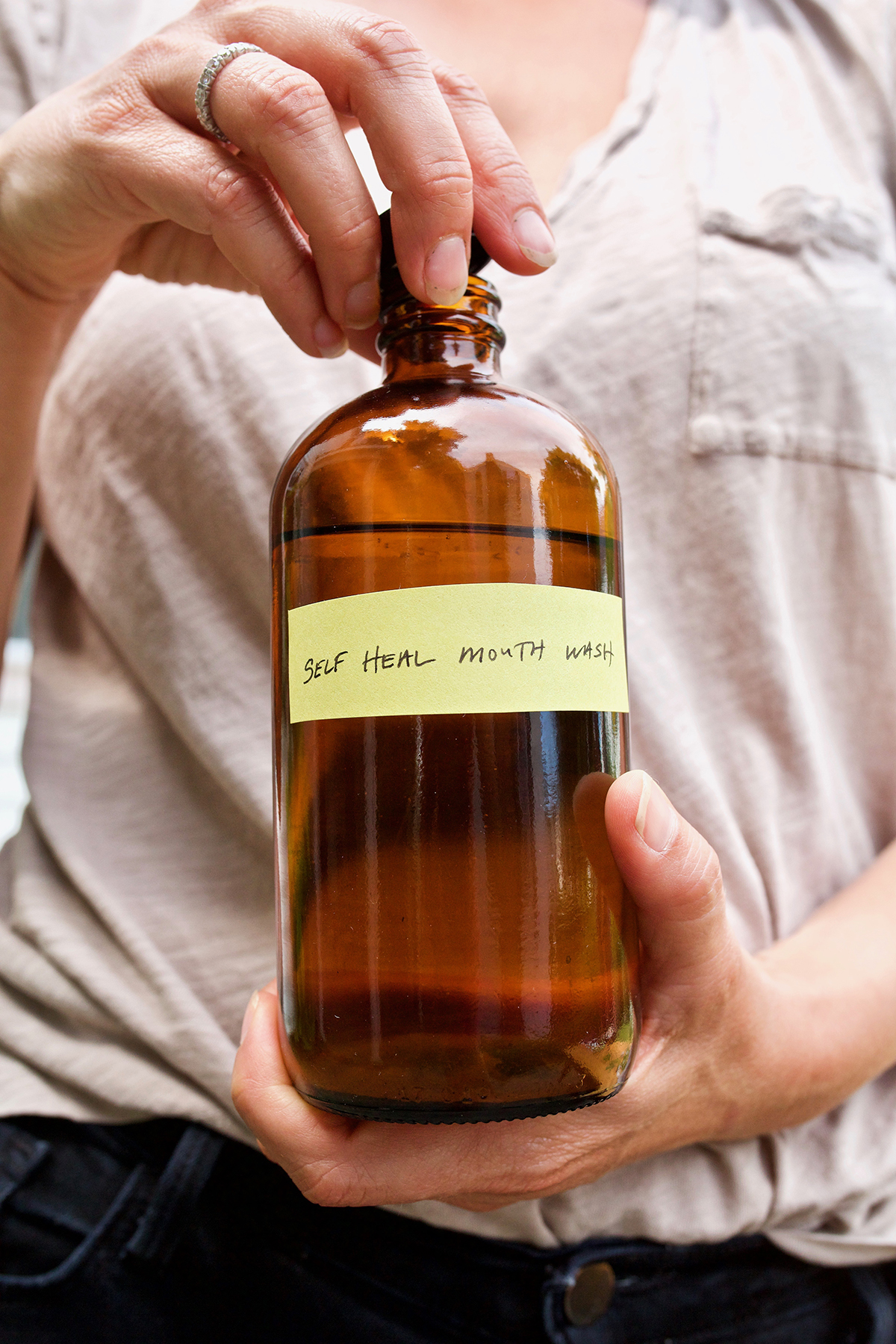
3. For Viral & Immune Support
One of my favorite ways to use self heal is for viral and immune system support (Bai et al., 2016). It can help stimulate localized immune response when applied externally and a more systemic response when taken internally. You can also use it in your immune-boosting herbal tea formula to help cold and flu symptoms or symptoms from more chronic viral conditions.
Traditionally, self heal was used for inflammations and sores of the mouth and throat, of both viral and bacterial causes (Wood, 2008). A strong infusion can be made from the leaves and used as a gargle or mouthwash to help calm inflammation, promote local immunity, assist in tissue health, and promote overall oral health. Self heal is a wonderful herb to incorporate into an herbal sitz bath formula for promoting a faster clearance of herpes outbreaks and tissue health around the sores (Holmes, 1989). Alternatively, you can infuse the aerial parts from self heal into a carrier oil then prepare a lip balm for oral herpes support (and for cracked, dry lips too!).
A Valuable Herb For Your Materia Medica
As you can see, self heal is truly a valuable herb that can be easily incorporated into your materia medica and herb garden. There are dozens of ways you can start using self heal today even with only applying the three uses we discussed in this article!
Curious to learn more ways you can use self heal? Learn how to utilize some of its core properties for Natural Allergy Support in our article here.
REFERENCES
Bai, Y., Xia, B., Xie, W., Zhou, Y., Xie, J., Li, H., … Li, C. (2016). Phytochemistry and pharmacological activities of the genus Prunella. Food Chemistry, 204, 483-496. http://doi.org/10.1016/j.foodchem.2016.02.047
Holmes, P. (1989). The energetics of Western herbs (Vol. 2). Boulder, CO: Snow Lotus Press.
Wood, M. (2008). The earthwise herbal: A complete guide to Old World medicinal plants. Berkeley, CA: North Atlantic Books.







